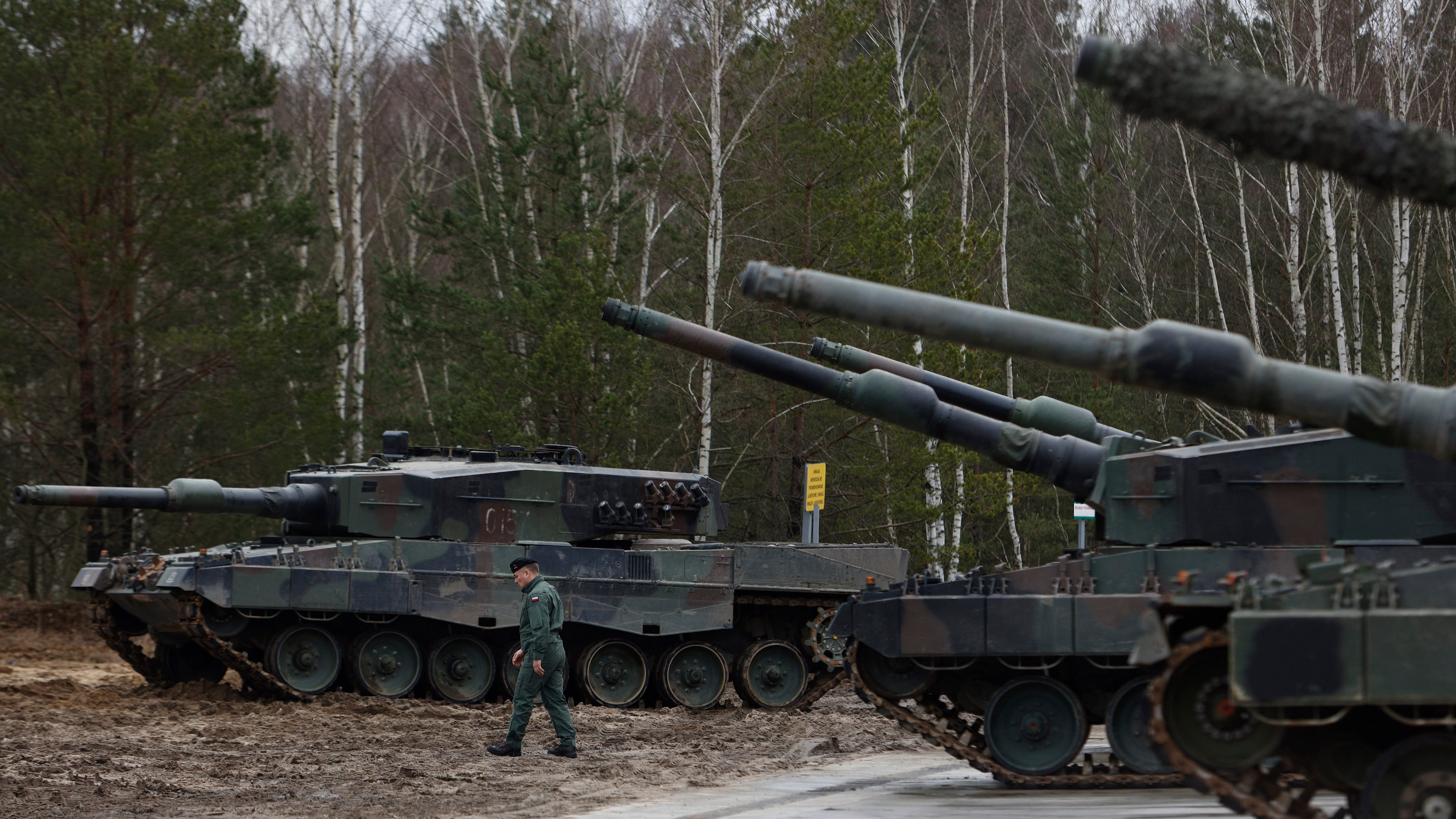With an eye on Russia, EU wants to make it easier to deploy tanks and troops at short notice

BRUSSELS (AP) — The European Union rolled out a new defense package on Wednesday to allow tanks and troops to deploy more rapidly across the many borders of the 27-nation bloc as concern mounts that Russia is already probing its defenses.
Europe’s foreign policy chief, Kaja Kallas, said that spending on defense now might avert war.
“Weakness invites them to make their move,” she said, speaking of Russia. She said if the EU increases its defensive capabilities and readiness, “then Russia will not attack because we are not weak.”
The new military mobility proposal by the EU’s executive branch, the European Commission, would invest 17.65 billion euro ($20.4 billion) into 500 hot spots from Poland to Portugal that are seen as choke-points, such as bridges, ports and tunnels currently unable to handle heavy traffic and vehicles.
Armed forces would be given priority access to infrastructure like airports, roads and railways during emergencies, and current regulations in some areas such as transporting dangerous goods would be scrapped for militaries or private defense companies.
Over the past few months, the EU has scrambled to deal with mysterious drone incursions linked to Russia. EU Defense Commissioner Andrius Kubilius said European intelligence services say that Russia could attack the EU in the next three or four years, or test NATO’s Article 5 guarantee that says an attack against one member is an attack against all.
The EU arose out of the determination to avoid a repetition of the horrors of the two world wars by binding the countries of Europe into closer economic and political cooperation. However, since Russia's full-scale invasion of Ukraine in February 2022, it has increasingly focused on defense and security.
“Resilient infrastructure. Joint action. Safer Europe. Today’s Military Mobility Package will strengthen Europe’s readiness and ability to move quickly in crisis," European Commission President Ursula von der Leyen posted on X after Wednesday's announcement.
‘Military Schengen’
One of the biggest challenges facing the push for defense integration is making transport systems interoperable, in terms of languages and protocols used at ports and train stations. Some railway gauges, for example, are mismatched, making it difficult to send trains carrying armored vehicles from elsewhere in Europe to the eastern flank bordering Russia, Belarus and Ukraine.
Kubilius said that eventually it aims to forge a “military Schengen,” a reference to Europe’s ID-check-free travel zone, which is made up of 25 EU member countries, plus Liechtenstein, Iceland, Norway and Switzerland.
He said that “frontier countries” like Estonia, Latvia, and Finland on the eastern flank require deeper infrastructure connections to ”continental countries” like France and Germany.
“This is how we turn industrial strength into operational readiness — and make sure Europe can move as one, with the speed and coordination of our security demands,” Kubilius said.
The new plan would be for each EU nation to send a representative to the Military Mobility Transport Group to streamline military deployments in times of peace, emergencies and conflict.
Auditors had warned in February that the EU’s military mobility was too small and poorly managed to be effective.
Boosting domestic production
The commission also announced a Defense Industry Transformation Roadmap which aims to simplify and unify regulations on the EU's defense industry, and corral investment into domestic production of weapons, vehicles, satellites, shells and bullets.
Both the package and the road map follow the Commission's “ Readiness 2030 ” security strategy built around the threat of Russian aggression. The commission estimates that EU defense spending this year will total around 392 billion euros ($457 billion), almost double the amount of four years ago, before Russia launched its full-scale invasion of Ukraine.
It believes that some 3.4 trillion euros ($4 trillion) will probably be spent on defense over the next decade. To help, it intends to propose boosting the EU’s long-term budget for defense and space to 131 billion euros ($153 billion).
EU member countries are being urged to buy much of their military equipment within the bloc, working mostly with European suppliers — in some cases with EU help to cut prices and speed up orders. Under the roadmap, EU nations should only purchase equipment from abroad when costs, performance or supply delays make it preferable.
The Trump administration has signaled it is prioritizing U.S. security on its own domestic borders and in Asia. It has told Europeans that they must fend for themselves and Ukraine in the future.
